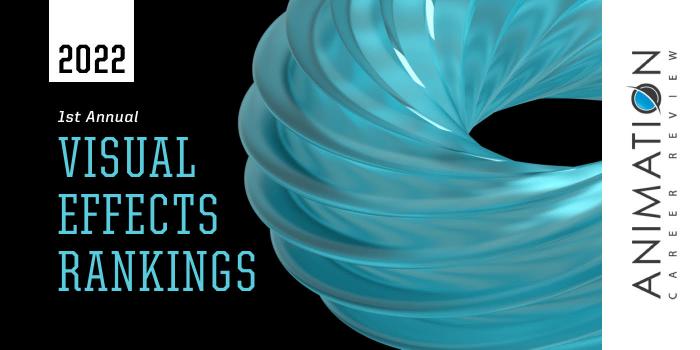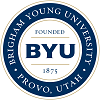

What are the top visual effects schools in the southwest for 2022?
| Ranking | School | State |
|---|---|---|
| 1 | University of Texas at Austin | Texas |
| 2 | Texas A&M University | Texas |
| 3 | Brigham Young University | Utah |
| 4 | University of Utah | Utah |
| 5 | University of Colorado-Denver | Colorado |
Our 2022 rankings of the Top 5 visual effect schools in the Southwest, our first annual rankings for VFX. For an explanation of ranking criteria, click here.

University of Texas at Austin (UT Austin) houses the Moody College of Communication, home of the Department of Radio-Television-Film (RTF), which has several pathways to study visual effects (VFX). For each pathway, students have access to a variety of courses that highlight visual and special effects. Examples include VFX & Motion Graphics; VFX for Storytelling; Digital Media Production, where students can choose an area of interest such as compositing and visual effects, animation and simulation, or CGI and interactive game design; and CGI for Film and Games, where students will study simulating effects and lighting and virtual cinematography.
All UT Austin RTF students also have access to the Digital Media Production Lab (DML), which features Adobe Creative Cloud Suite 2022, Autodesk Maya and Mudbox, Blackmagic Davinci Resolve, and other VFX tools; dedicated work spaces; five surround sound dubstages; and a 70 x 20 green screen. RTF students can participate in programs and events hosted by the Center for Entertainment and Media Industries (CEMI), and they have access to Wofford Denius UTLA Center for Entertainment & Media Studies, which provides internship opportunities at studios across Los Angeles.
Specific program options for students interested in VFX include the RTF BA, RTF Minor, and the MFA in Film & Media Production—all housed in Moody College of Communication. VFX courses are also accessible to students in the Arts and Entertainment Technologies BS Program (AET BS), housed in the College of Fine Arts’ School of Design and Creative Technologies’ Department of AET, and the University of Texas Game Development and Design Program, which is a partnership between the Department of AET, the Department of Computer Science (CS), and the RTF Department. This program leads to a BS.
Recent graduates of the Film and Entertainment Programs at UT Austin have been hired at some of the world’s top studios and production companies. Examples include Fox Searchlight, Amazon Studios, Walt Disney Studios, Sony Pictures Classics, Shondaland, Paramount Pictures, DreamWorks Animation, The Hollywood Reporter, BuzzFeed News, Lionsgate, iTunes, and BioWare.
University of Texas at Austin (UT Austin) is accredited by the Southern Association of Colleges and Schools Commission on Colleges (SACSCOC). Founded in 1883, the school opened with one building, eight professors, one proctor, and 221 students. Today, UT Austin is home to around 52,000 students served by a teaching faculty of 3,133. The University of Texas at Austin offers more than 500 degree programs and fields of study housed in 18 colleges and schools.

Texas A&M University (TAMU) houses the Department of Visualization, which has BS, MS, and MFA options in Visualization. The MFA degree is just one of a few programs of its kind in the U.S. and possibly the only one in the State of Texas.
Established in 1989 the TAMU Visualization Program is cross-disciplinary, allowing students to explore interaction, art, design, visualization, and computer graphics. Students at all levels may focus in any area of specialization through electives. Course examples for technical artists looking to develop skills in visual effects include Visualization Techniques, Digital Rendering, Visual Studies Studios, Computing for Visualization, Digital Compositing, Principles of Design, Virtual Reality, Creating Digital Environments, Multimedia Design and Development, Digital Characters: Art, Technology, Uses and Meaning, Interaction Design, and Interactive Virtual Environments.
TAMU Visualization students have opportunities to participate in the annual career fair and the semester away program in Italy, Germany, and other countries. Internship opportunities are also available at all levels. Supervised internships span 15 weeks and 600 hours. Students will earn six credit hours. Graduate internships are worth eight credits. TAMU Visualization students have interned at a variety of animation, game, and graphic design studios.
Texas A&M University Visualization graduates are often hired for positions at major studios. Examples include Walt Disney Animation Studios, Reel FX, Pixar, DreamWorks Animation, and Industrial Light & Magic (ILM).
Texas A&M University is accredited by the Southern Association of Colleges and Schools Commission on Colleges (SACSCOC). With more than 73,000 students, TAMU is one of the nation’s largest universities by enrollment. Established in 1876, Texas A&M is also the state’s first public institution of higher learning. TAMU offers more than 400 degree programs across 17 colleges and schools.

Brigham Young University (BYU) houses the BYU Center for Animation. Established in 2010, the Center is managed by the Ira A. Fulton College of Engineering and Technology, the College of Fine Arts and Communications, and the College of Physical and Mathematical Sciences.
Accepting just 20-25 students each year, the BYU Center for Animation is open to artists from the BYU BFA Animation Program (in the College of Fine Arts and Communications, Department of Design), and the Computer Science BS: Animation and Games (in the College of Physical and Mathematical Sciences, Department of Computer Science).
The BYU Center for Animation provides extensive hands-on training in animation, games, live-action, and special effects. However, students can choose to specialize in any area, including Visual and Special Effects (VFX, Special FX). Elective and other course options include 3D Visual Effects, After Effects, Special Effects, Film and Advanced Film Production, Interdisciplinary Motion, 3D Computer Graphics, Practicum: Cinematic Skills (included Visual and Practical Effects), Sound Acquisition, Lighting and Sound Production, and Advanced Editing.
All BFA, BS, and BYU Center for Animation students have opportunities to work on personal projects, engage in group collaborations, and create major films; complete an internship; study abroad; and develop a professional portfolio of their best work.
BYU Animation graduates go on to establish successful careers at major studios such as Industrial Light & Magic (ILM), Sony, Blizzard, Digital Domain, Pixar, Nickelodeon, DreamWorks, Disney, and Riot Games, among others.
Brigham Young University is accredited by the Northwest Commission on Colleges and Universities (NWCCU). Founded as Brigham Young Academy (BYA) in 1875 by Church of Jesus Christ of Latter-day Saints President Brigham Young, BYU serves nearly 35,000 students enrolled in close to 400 degree programs and minors. Brigham Young University is the one of the largest private universities in the U.S.

University of Utah (The U) has several paths to study visual or special effects. Housed in the College of Fine Arts is the Department of Film and Media Arts, which has a Film & Media Arts Program that allows students to tailor the degree across multiple areas of interest. Students in the BA Program may also choose an Emphasis in Film Production or Animation.
Course examples for the program include Digital Effects and Compositing for the Screen, Digital Visual Effects, Motion Capture, 3D Character Production, Interactive Machinima, Digital Cinematography, Media Arts Production, Directing, Programming, Film Editing, Sound for Film and Digital Media, Film Production, Directing, Storyboarding/Visual Storytelling, and 3D Character Animation.
Graduates of the Film Programs at University of Utah Department of Film and Media Arts are prepared for careers such as Visual Effects Artist, Visual Effects Animator, Film Editor, VFX Editor, Production Manager (VFX), Computer Animator, Digital Filmmaker, and Production Coordinator (VFX), among others.
University of Utah has an Entertainment Arts & Engineering (EAE) Program that was formed over a decade ago by faculty in the School of Computing and the Division of Film Studies (now the Department of Film & Media Arts). Several programs provide the opportunity to study VFX or special effects. Options include the BS in Computer Science with an EAE Emphasis and a Master of EAE (MEAE).
The EAE BS includes coursework in computer-generated special effects, 3D animation, visual perception, graphics, and game development. The MEAE has a Technical Arts Track, which allows students to Specialize in VFX. Through electives. students in both programs can take additional courses related to VFX or special effects.
Graduates of the EAE Programs at University of Utah are prepared for careers such as VFX Artist, Animation VFX Artist, VFX Editor, Production Coordinator (VFX), Video Game FX Artist, and 3D Animator, among others.
University of Utah is accredited by the Northwest Commission on Colleges and Universities (NWCCU). Founded in 1850, The U is Utah’s public flagship institution. This top-tier research institution serves around 34,425 students enrolled in more than 200 programs housed in 17 colleges and schools.

The College of Arts & Media (CAM) at University of Colorado Denver (CU Denver) houses the school’s Film and Television, Media Forensics, Music, and Visual Arts Programs. Within CAM is the Department of Visual Arts (VA) and the Digital Animation Center (DAC). Together, the VA and DAC offer a BFA in Visual Arts with an Emphasis in 3D Graphics and Animation.
This 120 credit hour program provides coursework and training that prepares students to work in film, animation, and visual effects. The program also covers 3D graphics and animation for science and medicine. Course examples for the program include Character FX, Intro to Film, Surface Modeling, Surface and Lighting, Digital Cinematography, Production I-III, Character Creation, DAC: Dynamic Simulation, 3D Design, Animation and Rigging, and DAC Modeling I-II.
Through electives, students can develop additional skills in VFX. Course examples include Editing and Post-Production Techniques, Lighting, Grip, and Sound, Sound for Film and TV, and Production I-II. Note CAM also offers a Film & Television Emphasis leading to a BFA, as well as a Film & Television Production Minor. Both programs offer opportunities to develop film production and post-production skills.
In the junior year of the CAM Visual Arts BFA Program, students will begin an 18-month Capstone experience—the Senior Film. In collaboration with departments across CAM, Visual Arts students will work in all areas to create this final project. They will create sound, visual and special effects, storylines, soundtracks, motion graphics, and more. Students may also participate in the internship program during the final years of the BFA program.
Graduates of the CU Denver BFA in Visual Arts-3D Graphics and Animation have produced films that have been screened in more than 300 film festivals in 22 countries. Graduates have also won more than 75 Best Animated Short awards in non-student categories.
University of Colorado Denver Visual Arts alumni are employed by major studios such as Pixar, Sony, and LucasArts, among others.
University of Colorado Denver is accredited by Higher Learning Commission (HLC). The school began in 1912 as an extension of the University of Colorado Boulder and became CU Denver in 1973, making it an independent campus. Organized into eight colleges and schools, CU Denver serves 15,000 students enrolled in more than 110 academic degrees.
